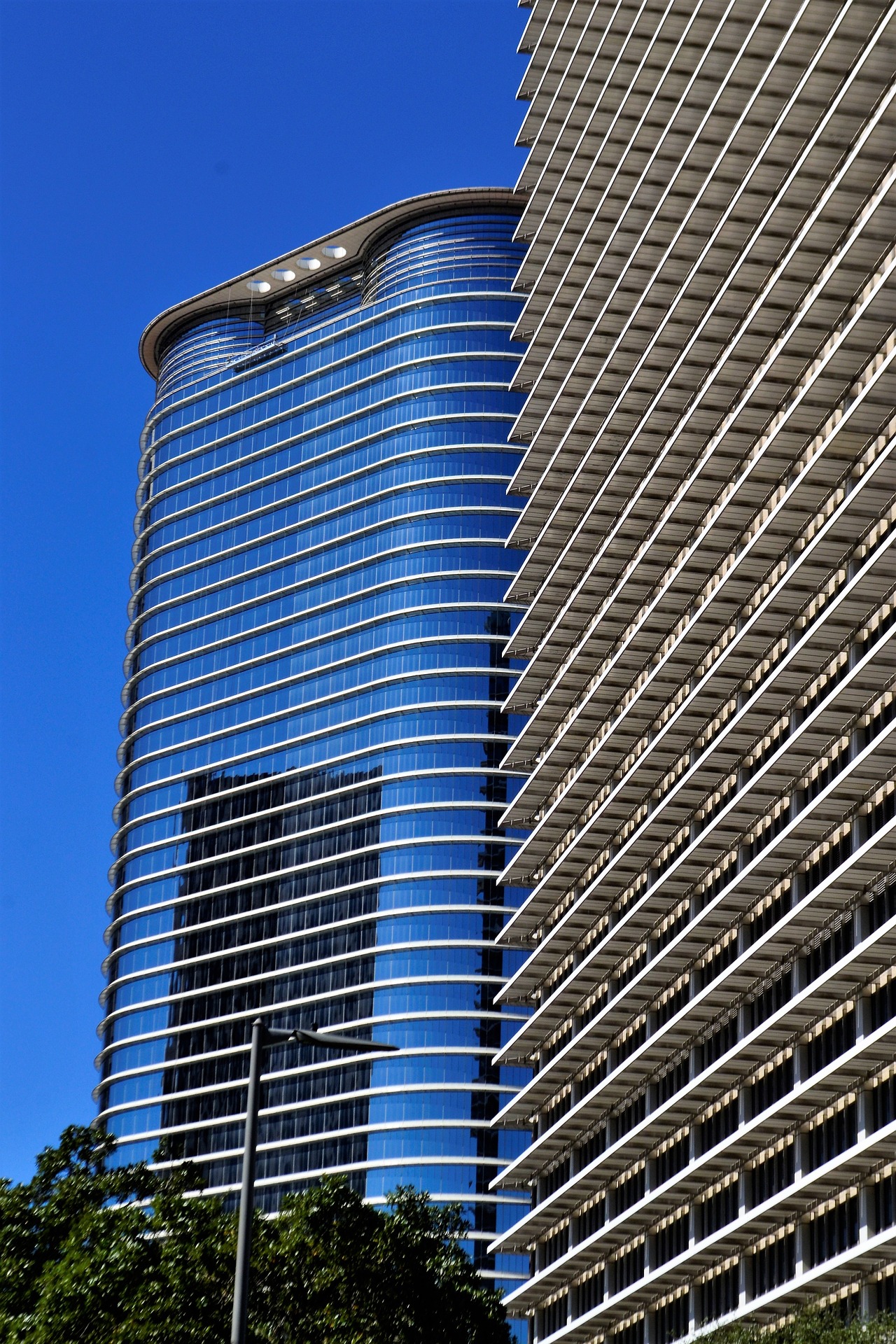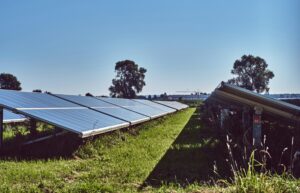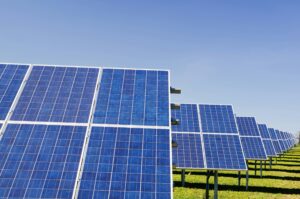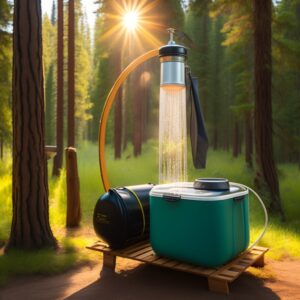In a world where innovation meets sustainability, the extraordinary synergy between solar development, brownfields and landfills, renewable energy, and sustainable redevelopment is taking center stage. Imagine the improbable: turning derelict spaces into thriving centers of clean energy production. This is the remarkable tale of how creativity, technology, and vision are coming together to reshape our landscape and our future.
Solar Development: Introduction
The modern world is at a crossroads, seeking solutions to the pressing challenges posed by climate change and energy consumption. Enter solar development, a transformative force that is not only reshaping the way we think about energy but also revolutionizing the spaces we thought were lost to neglect. This article embarks on a journey into the uncharted territory of turning brownfields and landfills into sources of undeniable value through the harnessing of renewable energy and the principles of sustainable redevelopment.
Setting the stage for solar development’s role in transforming brownfields and landfills
Imagine a world where forgotten and abandoned spaces could be reborn as sources of sustainable energy. This is the realm of solar development, a groundbreaking concept that promises to transform neglected brownfields and landfills into vibrant centers of renewable power generation. The stage is set for a remarkable journey, where innovation meets necessity, and where seemingly disparate elements converge to shape a greener, more resilient future.
Once dismissed as unusable and blighted, brownfields and landfills are now poised to play a pivotal role in our energy landscape. As we stand on the precipice of an energy revolution, it’s essential to understand the unique value that these sites can offer. These spaces, once scarred by their past, are about to undergo a metamorphosis that not only benefits the environment but also challenges conventional notions of development.
Unveiling the compelling value proposition
The synergy between solar development, brownfields, and landfills presents an undeniable value proposition. At its core lies the transformation of underutilized or polluted spaces into thriving sources of clean, renewable energy. This isn’t just a shift in how we generate power; it’s a paradigm shift in how we perceive the potential of our surroundings.
The value goes beyond energy production; it extends to environmental restoration, economic growth, and community empowerment. Solar development provides a solution that simultaneously addresses multiple challenges – from remediating contaminated sites and reducing carbon emissions to fostering local employment and promoting sustainable practices. The financial gains, regulatory incentives, and positive impact on surrounding communities weave together to create a tapestry of benefits that are impossible to ignore.
In unveiling this value proposition, we embark on a journey of exploration – not just into the technical intricacies of solar development, but into the very heart of what it means to repurpose, reimagine, and revitalize spaces that were once considered lost. As we delve deeper into the realms of innovation, sustainability, and the potential for positive change, we uncover a story that is as captivating as it is inspiring.
Solar Development: Understanding Brownfields and Landfills
Brownfields and landfills have long been emblematic of urban decay and environmental concern. Brownfields, once bustling with industrial activity, now stand abandoned and polluted, their potential overshadowed by their past. Landfills, on the other hand, conjure images of waste and environmental harm. But what if these spaces held the key to a greener future?
Defining brownfields and landfills in the context of urban development
In the urban tapestry, brownfields and landfills hold dual stories. Brownfields once vibrant, now abandoned due to contamination or obsolescence, echo urban evolution. Landfills reflect consumption patterns and waste. Both encapsulate our urban history and challenge, offering a chance for solar development to rewrite their narrative. From decay to clean energy, these spaces stand as testaments to human adaptability and a greener future.
Solar Development: Challenges & Opportunities
Brownfields and landfills hold untapped potential, but challenges abound. Contaminated brownfields demand meticulous remediation due to hazardous substances, prioritizing safety. Landfills present pollution risks, requiring innovative solutions. Their vastness and waste complexity complicate transformation. Amid these hurdles, solar development emerges as a ray of hope, converting these spaces into sources of renewable energy. It’s a journey that showcases human ingenuity’s resilience, demonstrating how urban spaces can be reborn as eco-friendly powerhouses.
The Solar Revolution: Turning Challenges into Opportunities
The solar revolution has arrived, and it’s casting its radiant light on unexpected places. Solar development represents a paradigm shift that leverages innovation to conquer challenges. Picture solar panels adorning these once-forgotten lands, their presence heralding a transformation that is as much about sustainable energy as it is about revitalization.
Exploring the Solar Energy Revolution and Global Impact
The solar energy revolution is an awe-inspiring force reshaping our energy landscape. It’s not merely a trend; it’s a paradigm shift towards cleaner, sustainable power generation. From residential rooftops to vast solar farms, solar energy is rapidly becoming a mainstay. This shift isn’t just local; it’s global. Nations around the world are embracing solar power as a cornerstone of their energy strategies, propelling us towards a future powered by nature’s most abundant resource – the sun.
Introducing Solar Development: A Creative Resurgence
In the tapestry of urban development, there’s a thread of innovation weaving through the overlooked and unused spaces. This thread is solar development, an imaginative solution that breathes life into once-neglected areas. Brownfields, once shadows of industrial might, and landfills, once symbols of waste, become canvases for solar panels. These solar arrays capture sunlight, turning blight into brightness. It’s an ingenious fusion of sustainability, technology, and creativity that transforms barren landscapes into vibrant contributors to our renewable energy future.
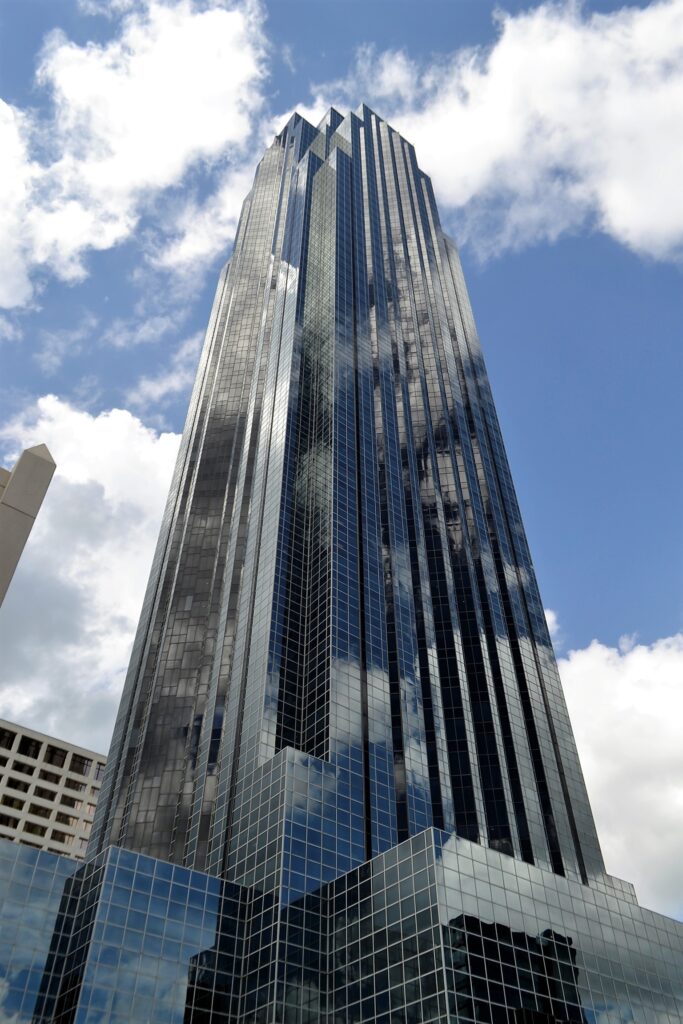
Unlocking Value: Benefits Beyond Imagination
The value of solar development on brownfields and landfills goes beyond what meets the eye. Firstly, it ushers in a new era of renewable energy production, reducing our reliance on fossil fuels and contributing to a cleaner environment. Moreover, the process involves cleaning and rehabilitating contaminated brownfields, healing the wounds inflicted on the land over decades. The financial aspects are equally compelling, with solar projects offering income streams and government incentives sweetening the deal.
Harnessing Renewable Energy Potential
Solar development on brownfields and landfills isn’t just about repurposing spaces; it’s about tapping into a wellspring of renewable energy potential. The sun, an eternal source of power, finds new purpose on these forgotten grounds. Solar panels, strategically positioned, capture sunlight and convert it into electricity, offsetting the need for fossil fuels. This transformation not only energizes the present but also lays the foundation for a greener, more self-reliant future.
Mitigating Environmental Risks and Promoting Sustainability
The beauty of solar development lies in its dual impact: it mitigates environmental risks while promoting sustainable practices. Brownfields, often laden with pollutants, undergo a process of remediation as solar arrays take their place. By reclaiming contaminated land, we heal the scars of the past. Moreover, the transition to clean energy production reduces greenhouse gas emissions, contributing to a more harmonious coexistence between human activity and the environment. This integration of environmental restoration and sustainable energy generation encapsulates the essence of solar development’s value.
Solar Development: Financial Gains and Incentives
Embracing solar development isn’t just an environmental triumph; it’s a wise financial move. The economic advantages are twofold: firstly, solar projects offer a consistent stream of income through energy generation. Secondly, governments and organizations are propelling this movement by offering a range of incentives, grants, and funding opportunities. These incentives not only make solar development financially viable but also accelerate the transition to renewable energy.
Highlighting the economic advantages of solar development
Unlocking more than just ecological potential, solar development turns brownfields and landfills into economic engines. These sites transition from disuse to revenue generation, powered by the sun. Solar projects offer ongoing income through energy production, infusing local economies with vitality. It’s a transformation that merges environmental revival with financial rejuvenation, illustrating how solar development doesn’t just energize landscapes; it energizes prosperity.
Discussing government incentives and funding opportunities
In a sustainable push, governments amplify the ascent of solar development on brownfields and landfills. Through grants, tax perks, and funding openings, they fuel the transformation. These incentives affirm the undeniable value of turning underutilized spaces into renewable energy hubs. This synthesis of fiscal backing and environmental mission underscores how solar development merges seamlessly into the quest for a cleaner, greener future.
Technical Feasibility: Engineering a Sustainable Future
Naysayers might question the feasibility of converting polluted land into solar powerhouses. However, advancements in solar technology are redefining what’s possible. Solar development has become synonymous with adaptability. Engineers and developers are devising innovative ways to integrate solar panels seamlessly into the landscape, ensuring that these sites not only generate clean energy but also blend harmoniously with their surroundings.
Addressing technical challenges and solutions
Converting brownfields and landfills into solar havens isn’t without its technical intricacies. Solar development demands innovative solutions to tackle site-specific challenges like contamination or irregular terrains.
Emphasizing adaptability and scalability
Emphasizing adaptability and scalability, engineers weave creativity into the fabric of solar arrays, transforming potential obstacles into stepping stones toward sustainability.
Solar Development: Community Engagement and the Ripple Effect
The impact of solar development goes well beyond energy production. It carries the potential to rejuvenate communities and inspire a sense of ownership. The transformed brownfields and landfills become more than just power generators; they become symbols of progress. Communities enjoy cleaner air, employment opportunities, and a renewed spirit of environmental stewardship.
Exploring the social benefits for surrounding communities
As renewable energy illuminates brownfields and landfills, its glow extends beyond electricity. Surrounding communities reap social benefits, enjoying cleaner air and economic growth.
Fostering community engagement and support
Fostering community engagement amplifies this value, uniting neighbors in the shared vision of a sustainable, vibrant future powered by the undeniable brilliance of the sun.
Solar Development: Case Studies
Real-world success stories illuminate the potential of solar development on brownfields and landfills. The undeniable value becomes evident when we explore projects like the Sun Bloom Initiative. Once a brownfield, it’s now a blooming solar farm powering homes and businesses. These case studies remind us that the only limit is our imagination.
Showcasing real-life examples of brownfields and landfills turned into solar power plants
Real-Life Metamorphoses of Brownfields and Landfills into Solar Power Plants. Witness the journey from blight to renewable energy brilliance, inspiring a sustainable future through innovative solar development initiatives.
Drawing insights from their journey and outcomes
Delve into the inspiring odyssey of solar development on brownfields and landfills. Uncover valuable insights from these transformative journeys, exploring outcomes that illuminate the path toward sustainable energy and environmental revitalization.
Solar Development: Conclusion Reimagined
As we draw the curtain on our exploration into the symbiotic relationship between solar development and brownfields or landfills, it becomes increasingly clear that we are standing at the intersection of two transformative pathways: renewable energy and sustainable land use. This unique juncture is far more than a temporary trend or a niche interest; it represents a paradigm shift in how we conceive of energy production, land conservation, and environmental stewardship.
The integration of solar development into brownfields and landfills isn’t just an exercise in utility—it’s a potent example of restorative innovation. By installing solar panels on degraded lands, we accomplish multiple objectives: we breathe new life into spaces that have been considered unsuitable for most uses, we enhance the local economy by generating jobs and investment, and we produce clean energy that lessens our dependence on fossil fuels. It’s a multi-pronged approach where the benefits are felt at the local, regional, and even global levels.
Moreover, each solar panel that harnesses the sun’s rays epitomizes the transformative power of renewable technology. As these panels capture and convert sunlight into electricity, they do more than just power our homes or businesses. They serve as tangible markers of a society transitioning toward a more sustainable ethos. Each plot of revitalized land, once a landfill or brownfield, becomes a testament to what is possible when innovation aligns with sustainability. It turns these sites from symbols of past environmental neglect into beacons of a future-oriented, responsible approach to energy and land use.
The ripple effects of this kind of solar development go beyond just the technical or environmental. By prioritizing brownfields and landfills for solar installations, we also send a powerful social message about redemption and renewal. It challenges the narrative of “used and discarded” whether we’re talking about land or resources, advocating instead for a model that is cyclical and sustainable, offering benefits that go beyond the immediate term.
So, as we look ahead, it becomes imperative to champion this kind of conscientious solar development. It is not merely a topic for policymakers and industrialists; it is a subject that concerns us all as inhabitants of this planet. The more we invest in projects that not only produce clean energy but also rehabilitate compromised lands, the more we illuminate a multifaceted path toward a brighter, cleaner, and infinitely more sustainable world.
In embracing this solar-powered journey, we’re not just adopting a form of energy; we’re adopting a new worldview. It’s a perspective where every ray of sunlight and each square foot of rehabilitated land counts, building incrementally toward a future where the ideals of innovation, sustainability, and communal responsibility are not just theoretical goals but lived realities. Let’s continue to cast this sustainable vision far and wide, illuminating the manifold possibilities that emerge when solar development and ecological mindfulness walk hand in hand.
FAQs
Can solar panels be installed on brownfields without disturbing contaminated soil?
Absolutely, advanced engineering techniques have been developed to ensure solar panels can be safely installed on brownfields without disturbing the contaminated soil beneath. Specialized mounting systems such as ballasted foundations or driven piles can be employed, which are designed to minimize soil penetration.
These technologies make it possible to place solar panels securely while preventing any disturbance that might release contaminants. By carefully planning the installation process, experts are able to capitalize on the energy-producing potential of these lands without exacerbating existing environmental issues.
What government grants are available for solar development on brownfields and landfills?
There are multiple government grants and financial incentives available that are specifically geared towards encouraging solar development on brownfields and landfills. These can vary by country, state, or even municipality.
For example, in the United States, Brownfield Cleanup Grants provide funds for the revitalization of brownfield sites, including their conversion into renewable energy facilities. Similarly, Clean Energy Financing programs can provide low-interest loans or grants to subsidize the costs of solar installations. Tax incentives, renewable energy credits, and feed-in tariffs are other mechanisms that can make these projects financially feasible. It’s advisable to consult with local and national environmental agencies to identify which grants or incentives might apply to your specific project.
What happens to excess energy generated by solar projects on these sites?
Excess energy generated from solar installations on brownfields or landfills is commonly fed back into the local or national power grid. This not only contributes to the overall energy supply but can also generate income or credits for the entity operating the solar facility.
Additionally, some solar development projects incorporate advanced energy storage solutions, such as lithium-ion batteries or other forms of energy storage systems. These systems store surplus energy generated during peak sunlight hours, which can then be deployed during periods of low sunlight or high demand, thereby optimizing the energy utilization cycle.
How can solar development on landfills prevent potential groundwater contamination?
One of the environmental advantages of solar development on landfill sites is that it often involves covering the surface of the landfill with solar panels and additional protective layers, which serve as a barrier to rainwater. By preventing rainwater from penetrating the waste material, the likelihood of contaminants leaching into the groundwater is significantly reduced.
Moreover, some solar installations on landfills incorporate specialized liners or drainage systems to further mitigate any potential for groundwater contamination. Essentially, the solar development acts as a secondary safeguard to minimize environmental risks and improve landfill management.
What strategies can communities employ to ensure their input in solar development projects?
Community involvement is crucial for the successful implementation of any solar development project, especially those on brownfields or landfills, which may have pre-existing environmental concerns. Town hall meetings and public consultations are effective platforms where community members can voice their opinions, preferences, and concerns.
In addition, partnerships can be formed between local authorities, community organizations, and developers to ensure that the project aligns with the community’s values and needs. Open dialogue, transparent communication, and regular updates are key elements in fostering a sense of ownership and inclusivity. Furthermore, communities can leverage social media or local news outlets to disseminate information and gather feedback, making the decision-making process more democratic and well-informed.

